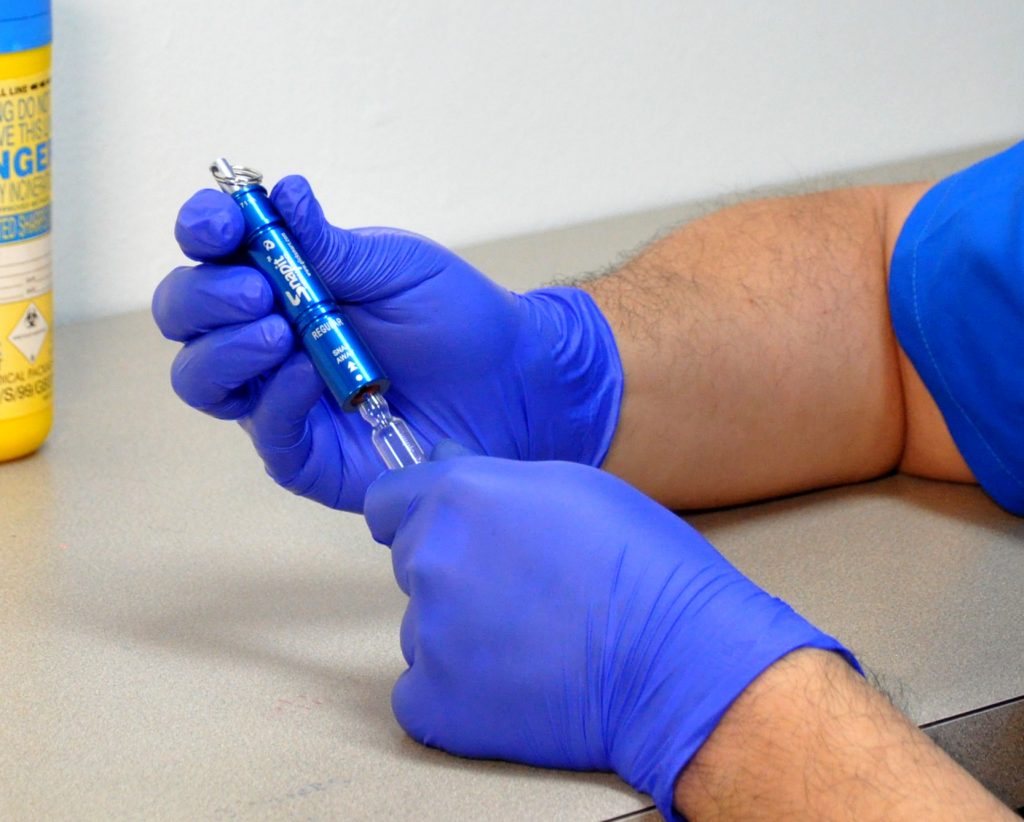Reduce Your Risk When Using Testosterone Ampoules
Over the last 2 decades, testosterone prescriptions have increased. In the US alone, testosterone is being prescribed to over 1 million patients as of 2018 (1). This article aims to educate those that are using testosterone ampoules to reduce their risk when opening the glass containers.
What is Testosterone?
If you’re reading this, you might already know a lot about testosterone. Here’s a quick summary of what it is and what it can do to your body.
Testosterone is a naturally-occurring hormone released by the body stimulating the growth, development and functioning of male sexual organs and characteristics. It is classed as an androgenic hormone drug and is primarily used for treatment of hypogonadism (2). Hypogonadism is a medical condition, in which the body does not naturally produce enough testosterone. Testosterone may also be used in gender-affirming hormone therapy for transgender or non-binary patients.
According to the American Academy of Family Physicians, there are also other possible benefits of testosterone treatments (3):
- Increased lean muscle mass
- Improved cognition
- Improved mood
- Increased sense of well-being, including patients who are HIV positive
- Decreased erectile dysfunction
- Increased bone density
- Increased muscle strength
Testosterone is classified as a Schedule III controlled drug in the US, meaning that acquiring testosterone requires a prescription from a medical professional.
It can be administered via injection, patch, topical gel, pill, or implant. Testosterone pellets and solutions are typically packaged in glass ampoules.
Opening Testosterone Ampoules
Opening these glass ampoules can be unnerving and can sometimes lead to cuts.
In a study regarding the incidence of ampoule injuries, more than 50% of ampoule users have experienced a cut from a glass ampoule (5). Even trained medical professionals who open ampoules daily can be injured while opening ampoules. 1 in 3 nurses , and most sharps injuries to anaesthetists are caused by glass ampoules (4).
Ampoule cuts are often overlooked as small and insignificant. You might think that ampoule cuts are simply an inconvenience. However, deep cuts can occur and may require surgery. In a case from the UK, a healthcare worker required surgery to repair their digital nerve, as a result of an ampoule injury (6).
Another potential issue when opening glass ampoules is that the testosterone solution may be wasted or contaminated by glass shards when an ampoule breaks incorrectly.
An ampoule opener can streamline this opening process to make it easier for the user. This in turn reduces spills and contamination.
The Qlicksmart SnapIT Ampoule Opener
Fortunately there’s an easy solution to opening ampoules. Qlicksmart’s reusable SnapIT ampoule opener is designed to be an effortless and effective tool to help safely open ampoules. A recent investigation by the Gaithersburg Safety, Health, and Environment (GB SHE) department revealed that, of all the ampoule safety products, the SnapIT was the most effective option (7). SnapIT was designed by an Australian nurse to be easy to use and protect all ampoule openers; and is available in a variety of colours.
Contact us at hello@qlicksmart.com to find out more about how the SnapIT ampoule opener can protect you when administering testosterone.
References
- MedlinePlus. (2019). Testosterone Injection.
http://medlineplus.gov/druginfo/meds/a614041.html - ClinCalc. (2021). Testosterone drug usage statistics, United States, 2008 – 2018.
http://clincalc.com/DrugStats/Drugs/Testosterone - Margo, K., & Winn, R. (2006). Testosterone treatments: why, when, and how?. American family physician, 73(9), Page 1591–1598. http://www.aafp.org/afp/2006/0501/p1591.html
- Kahriman, I. & Polat, S. (2016). Injury experiences and precautions taken by nurses working in pediatric wards towards penetrative/incisive tools. International Journal of Caring Sciences. Volume 9 Issue 2 Page 569.
http://www.internationaljournalofcaringsciences.org/docs/23_Kahirman_original_9_2.pdf - Parker, M. R. (1995). The use of protective gloves, the incidence of ampoule injury and the prevalence of hand laceration amongst anaesthetic personnel. Anaesthesia, 50(8), 726–729. http://doi.org/10.1111/j.1365-2044.1995.tb06105.x
- Chandan, G. (2006). Propofol ampoule: Take care while opening. The Internet Journal of Anesthesiology. Volume 12 Number 2.
http://ispub.com/IJA/12/2/6369 - DiGiandomenico, K. & Petit, A.S. (2018). Ampoule opening device: lessons learned from incident study of sharp injuries. Presented at 61st Annual Biological Safety Conference. http://absaconference.org/wp-content/uploads/2018/11/ABSA2018-22_Poster_DiGiandomenico.pdf



